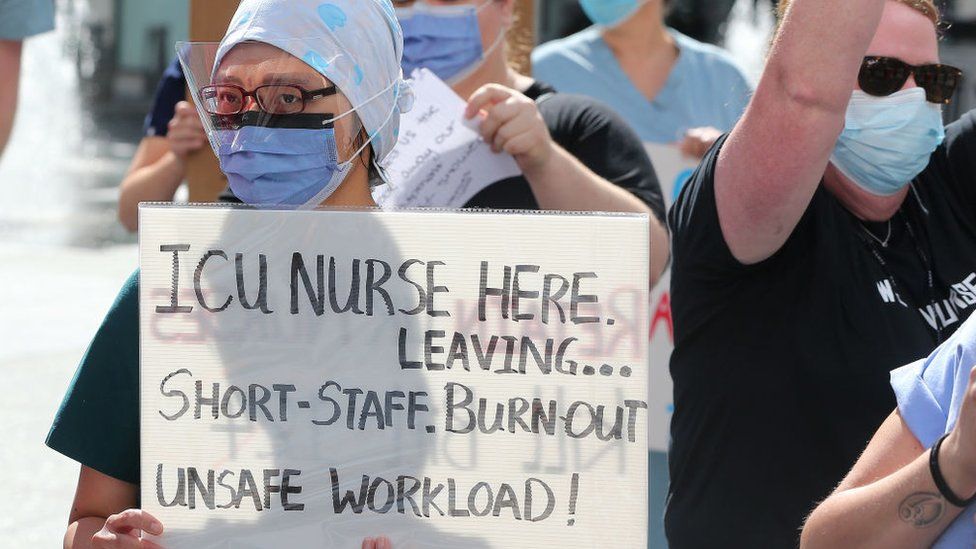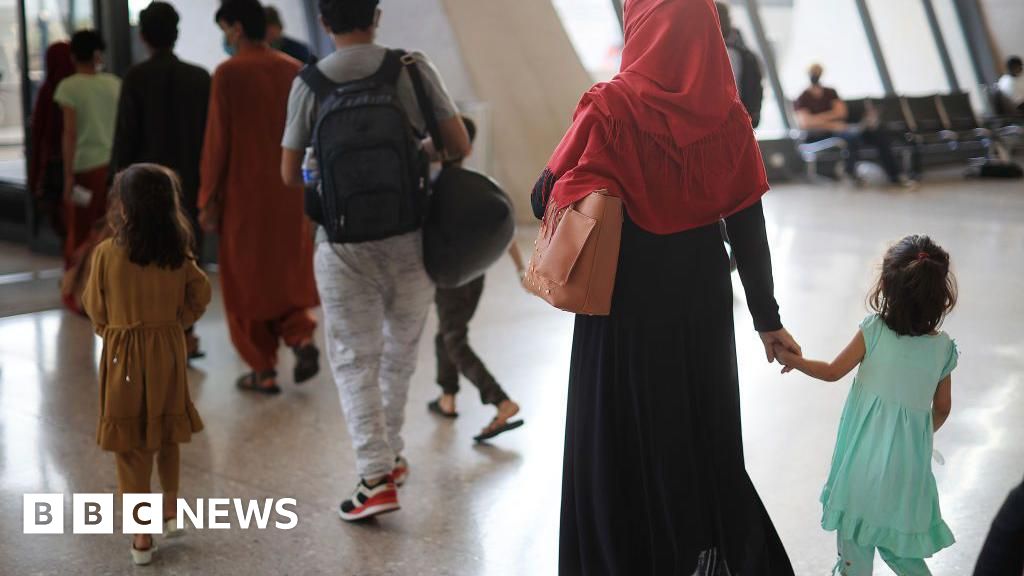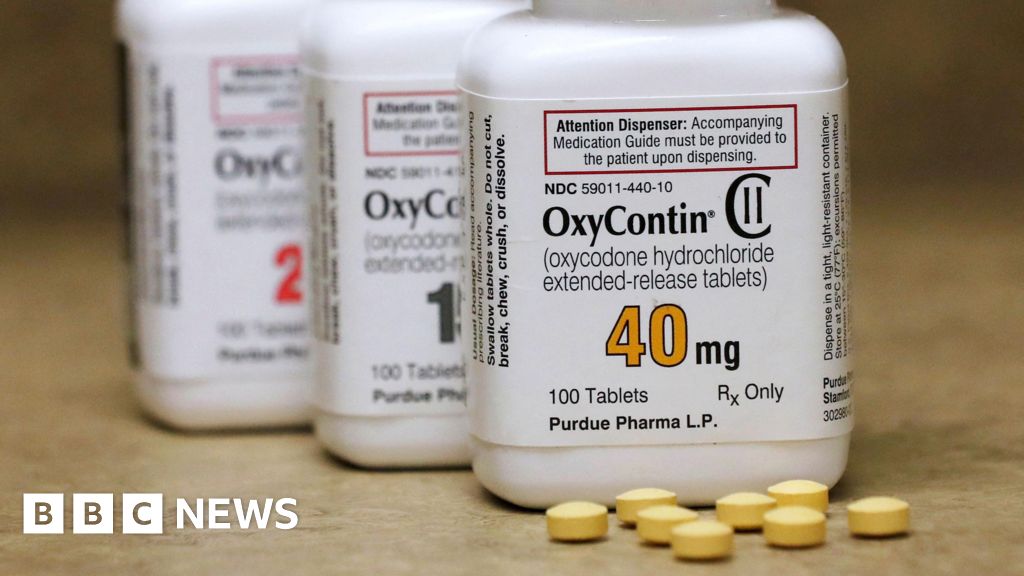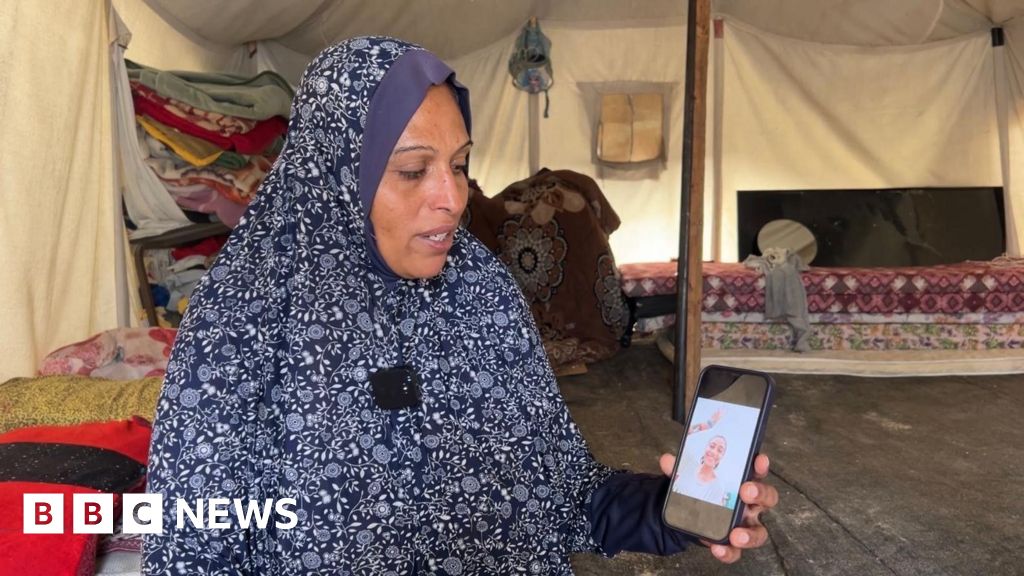ARTICLE AD BOX
By Nadine Yousif
BBC News
 Image source, Getty Images
Image source, Getty Images
A nurse rallies against wage-suppression legislation in Toronto, Canada on 9 September 2021.
On a Thursday in mid-August, the doors of a hospital's emergency department two hours west of Toronto were shut.
A note posted on the front said the ER was closed for the day. It would reopen the following morning at 08:00, but close again for the evening. Patients who needed urgent care were asked to go to nearby hospitals - a 15- to 35-minute drive away.
It was the ninth time since April that the Huron Public Healthcare Alliance - a network of four hospitals serving around 150,000 people in western Ontario - had to temporarily close or cut back hours at one of its emergency departments.
And it won't be the last, said the organisation's CEO Andrew Williams.
The reason? There aren't enough nurses to staff the ER.
"You are seeing - almost weekly - hospitals having to reduce their services," Mr Williams told the BBC.
It's a dilemma playing out at emergency departments across Canada, particularly at smaller hospitals where reduced services have become commonplace.
In the maritime province of Nova Scotia, one hospital's ER has been closed since June 2021 due to staffing shortages.
Canada is one of the richest countries in the world. Its universal publicly funded healthcare system has been touted by progressive politicians in the US, the country's southern neighbour, who see it as a needed alternative to an American system where millions remain uninsured.
But in recent months, Canada's system has been described by workers and hospital executives as being in a state of "crisis".
That includes struggling emergency rooms.
Toronto ER physician Dr Raghu Venugopal said he has seen stretchers lining the hallways, occupied by patients suffering from ailments like a broken hip or abdominal pains.
On some days, those patients may wait anywhere from two to four days to be admitted to hospital, all while a team of two nurses tends to a total of 50 to 60 patients on the unit.
Other patients are being examined in the waiting room because the lack of staff has forced parts of the ER to close, meaning there is limited space for doctors to see them privately.
"We are in a standard-less void where anything goes, and it is shocking," Dr Venugopal said.
In the prairie province of Saskatchewan, one nurse said some paramedics have spent the entirety of their 12-hour shift waiting with a patient on a stretcher as no one was around to admit them for treatment, leaving the paramedic unavailable to respond to other calls.
Patient stories have also emerged across the country.
The challenges brought on by Covid-19 bear part of the blame.
Many nurses in Canada - fatigued from the pandemic -have said they plan to leave the profession due to burnout and limited support. Similar sentiments have been expressed by nurses in the US and in the UK, where a strike vote over wages is looming.
But experts say decades of bad policy, including the closure of hospitals and past austerity budgets, coupled with Canada's vast and complex geography, have exacerbated the pandemic pressure.
This has ignited a national debate on how to retain staff - primarily nurses - and how to save a cherished public health system that is facing mounting pressure as it tries to care for an ageing population.
Many are asking "what kind of system do we want", said Jennifer Jackson, an assistant professor at the University of Calgary's faculty of nursing, "And if we want that system, what is required of us as a society to get there?"
The modern version of Canada's universal healthcare system - under the Canada Health Act - has existed since 1984, though its roots were laid decades earlier in the province of Saskatchewan. Britain's National Health Service, established in 1946, served as inspiration.
Canada's system, however, ranks lower overall than the UK and others in international comparisons.
A 2021 report by the Commonwealth Fund listed it as second-last overall among a list of 11 rich countries - above only the US. There are 2.5 hospital beds in Canada per 1,000 people, placing it near the bottom of OECD countries.
Canada specifically lags when it comes to equitable access and care outcomes.
Data over the last five years shows people are waiting longer in the ER before they are either seen by a doctor or admitted to hospital. Nearly five million Canadians don't have a family doctor, often making an emergency room their primary place to get help if they need it.
Over the years, as Canada's population grew in size and age, its healthcare capacity struggled to keep up. Rural hospitals - where it can be a challenge to recruit staff - have been most affected.
This is made worse by a vacuum of nursing talent that existed before the pandemic. There were 34,315 vacant nursing jobs in Canada at the end of 2021 - a 133% increase from 2019.
It is estimated that Canada will be short 117,600 nurses by 2030. A third of the current workforce is close to retirement, and in a 2021 national survey, nearly 60% of early-career nurses say they are considering leaving their current job.
While there are no official numbers on how many nurses left the profession during the pandemic, sources the BBC interviewed for this story spoke of nurses that have cut back on their hours or taken early retirements.
Those that remain say they feel the pressure. Saskatchewan ER nurse Jacelyn Wingerter, 22, began working just eight months ago but already feels burnt out.
The waiting room of the ER she works in can only hold 20 patients, but has seen up to 50 in recent months amid a chronic shortage of nurses.
"Our baseline is supposed to be 19 [nurses], but that never happens", she said. "We are always short."
In May, she worked a total of 290 hours to fill the gap, about 70 hours a week.
The shortcomings of the system are most visible in the ER because it's often the catch-all for all health emergencies, said Ms Jackson.
Closing the ER is never an easy decision, said Huron Public Healthcare Alliance's Mr Williams, but one his hospitals have had to make as a poorly-staffed ER can be dangerous.
"Our obligation all the time is to provide the safest care that we can," he said.
Still, there are consequences. Brenda Gascho, a nurse at one of the hospitals Mr Williams oversees, said a closure at one ER means a bigger backlog at another one nearby.
Some patients end up leaving without being seen by a doctor or a nurse, aggravated by lengthier-than-usual wait times, she said.
People foregoing care because of the system's shortcomings is something Ms Jackson worries about. Nurses and doctors in Canada are still some of the most highly trained in the world and are determined to do their best whatever the resources, she said.
Some solutions to the crisis proposed by those in the sector include increasing wages for existing nurses, allowing internationally-educated nurses to practice in Canada, and increasing the capacity of nursing schools across the country, especially in rural areas.
Others have called for funding to be increased for care based in the community, so that people can access help before they end up in the ER.
Provinces are responsible for the healthcare system in their respective jurisdictions, though they rely on funding from the federal government.
Prime Minister Justin Trudeau has said that Canada's public health care system "is one of the greatest things" about the country, and that his government is committed to working with provinces to "ensure Canadians get good, quality" care.
Ms Jackson said the challenge of healthcare policy is that decision makers tend to focus on short-term solutions, but healthcare in Canada could also benefit from larger overhauls that can increase access to everyone in the long term.
The big decisions made today, she said, will have a profound impact on future generations.

 2 years ago
53
2 years ago
53








 English (US) ·
English (US) ·